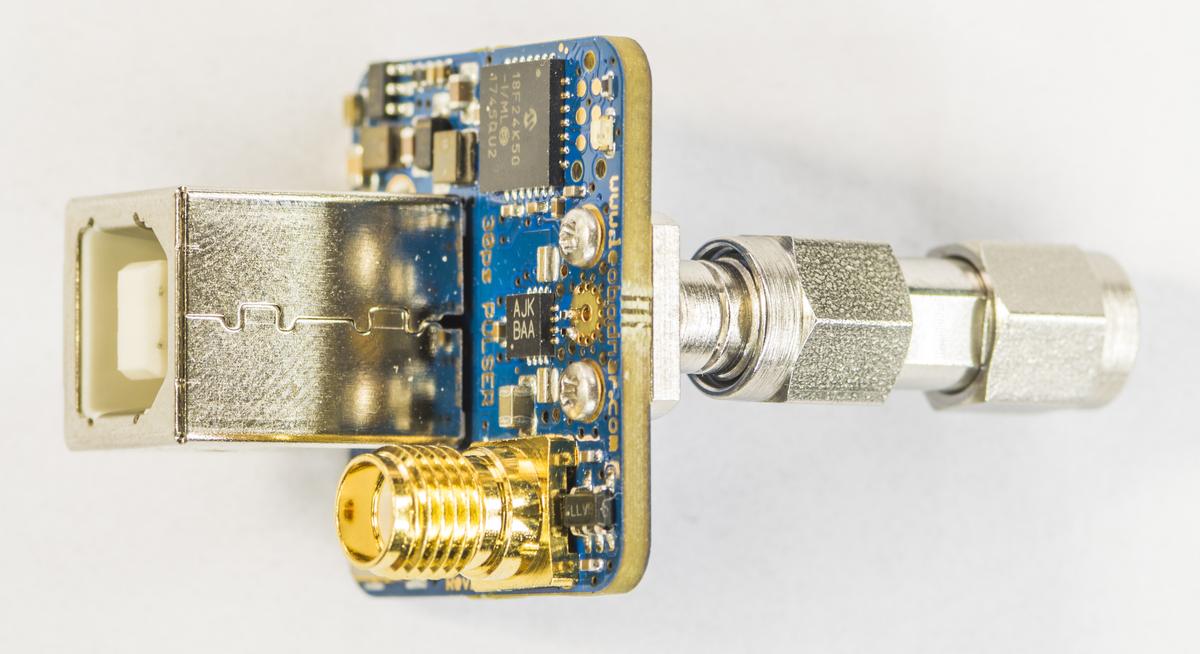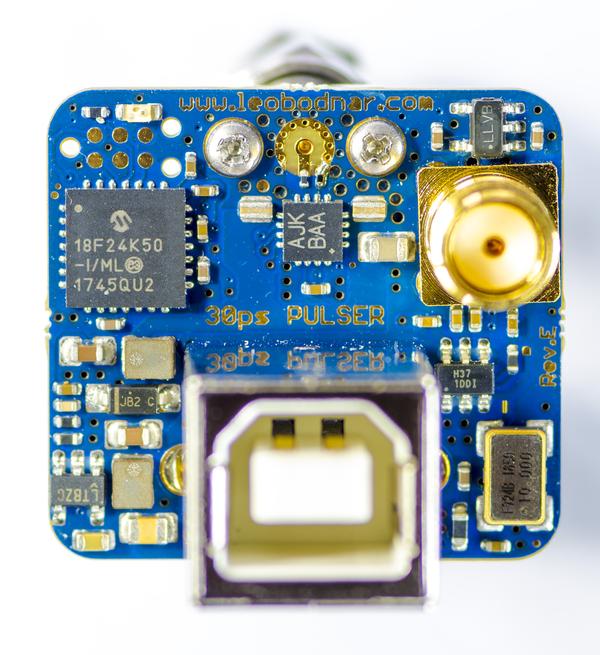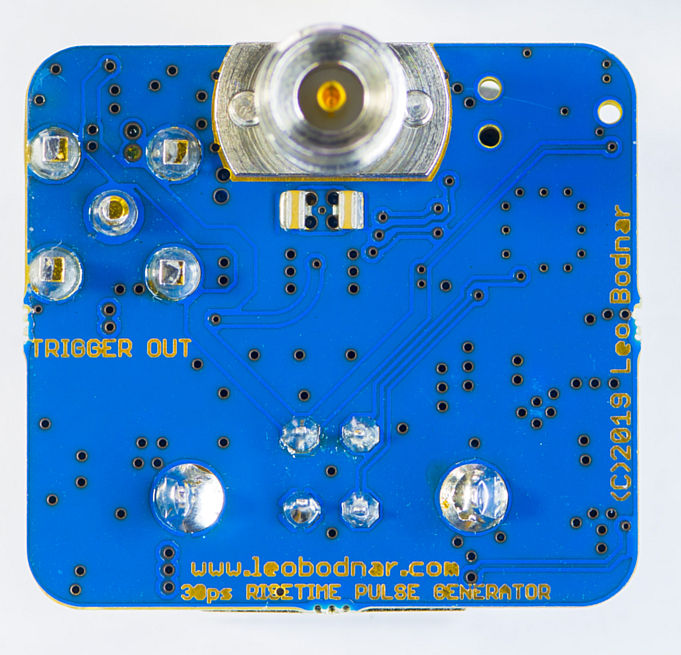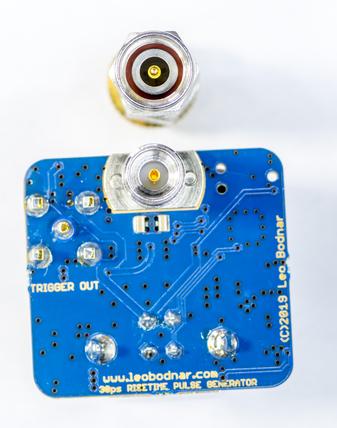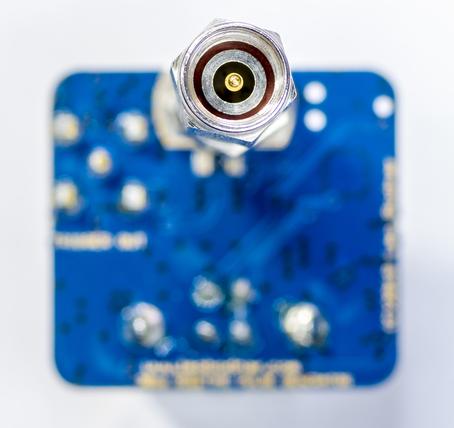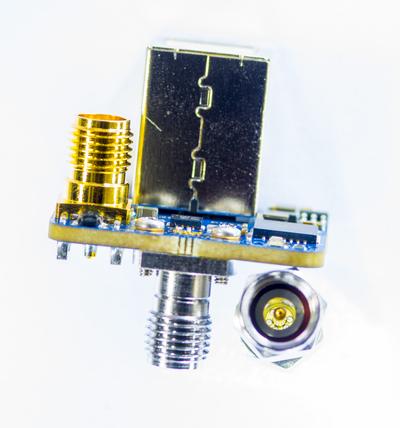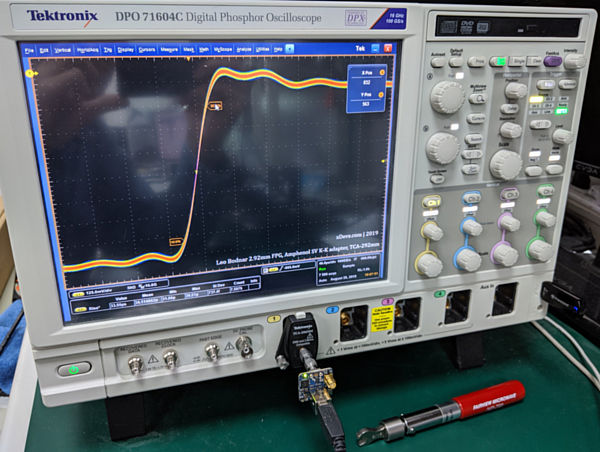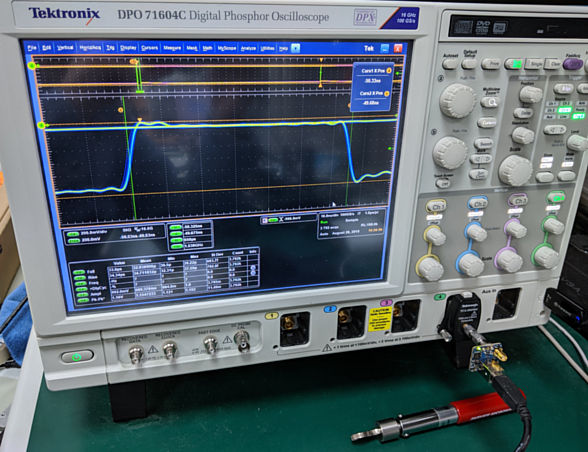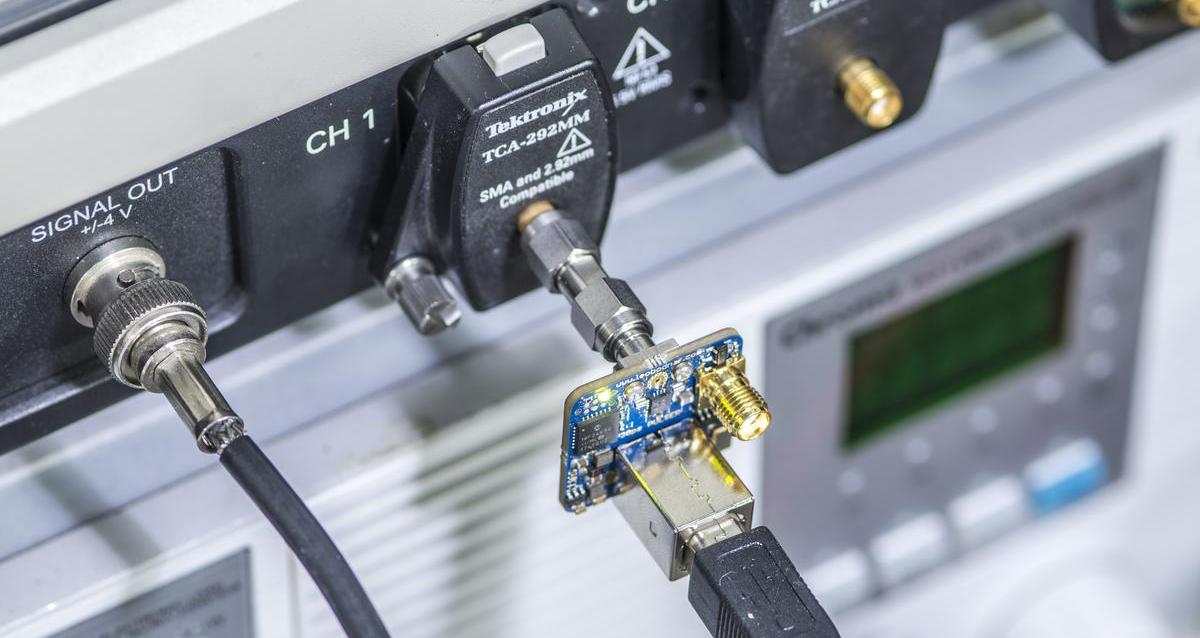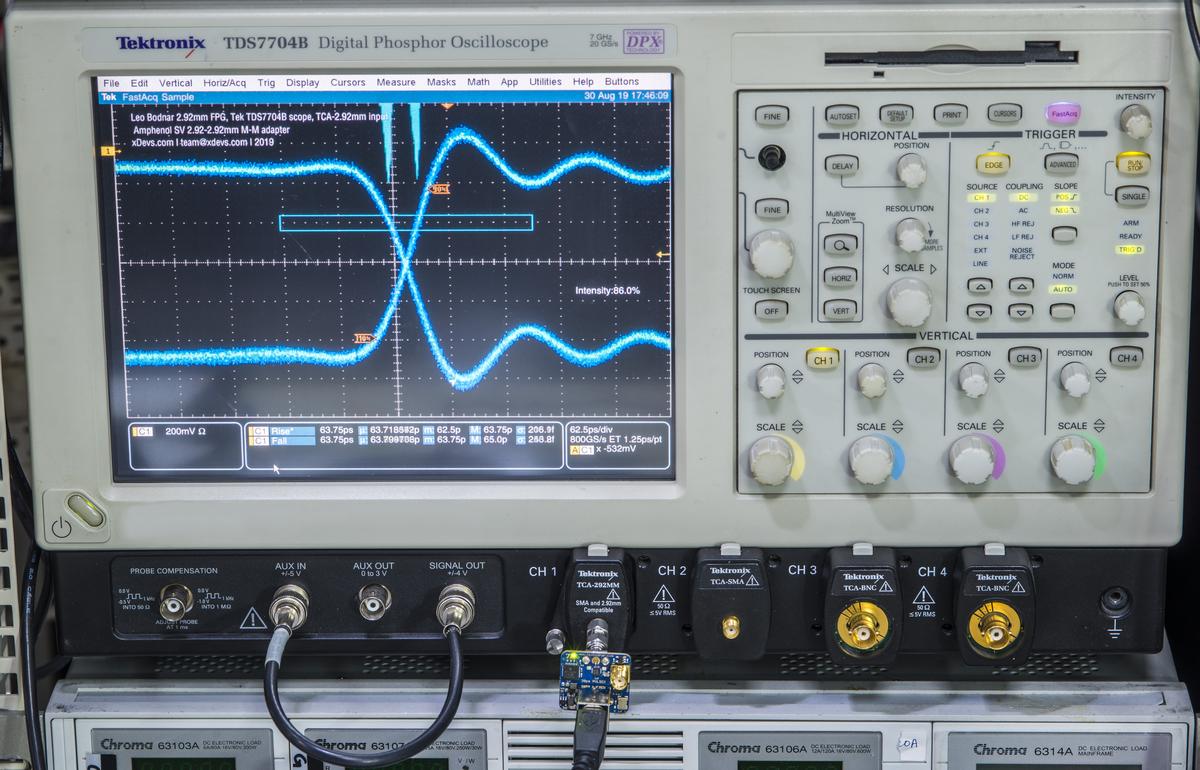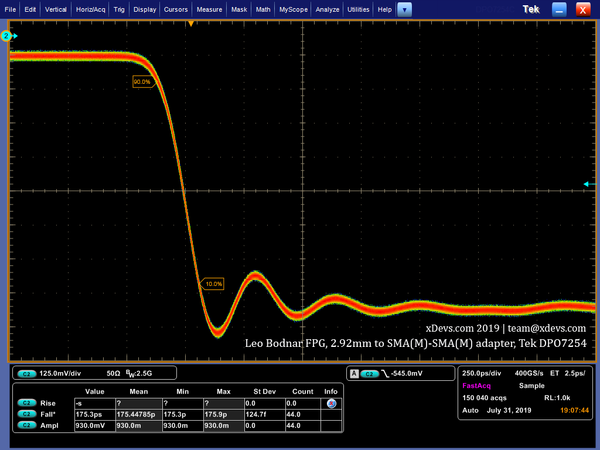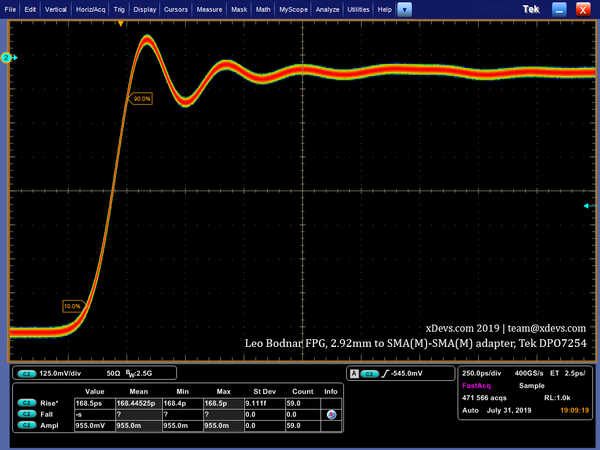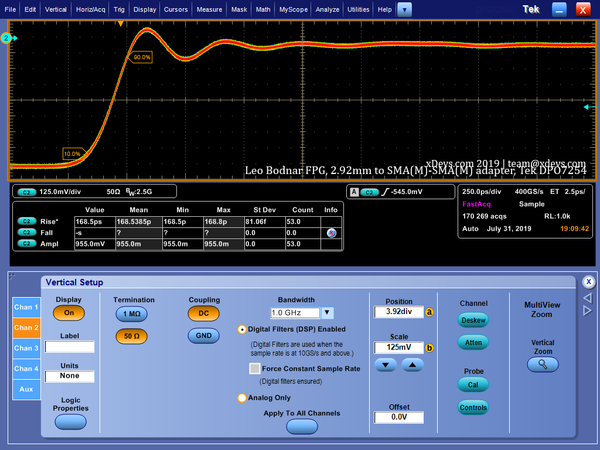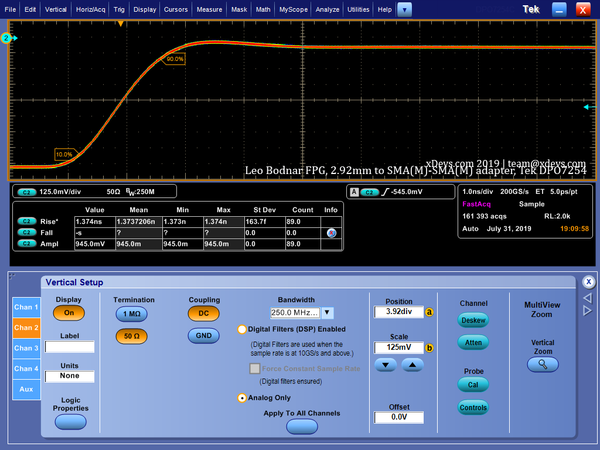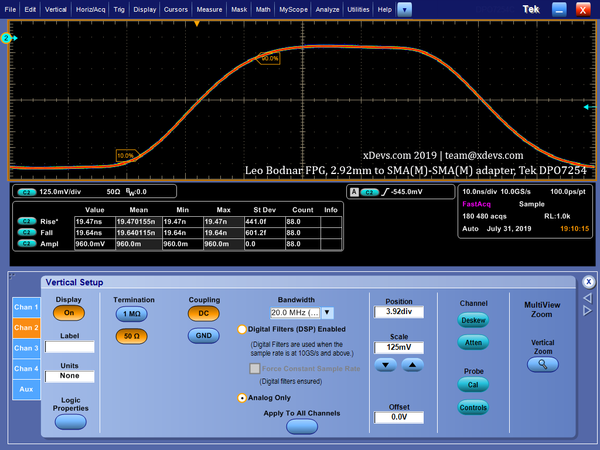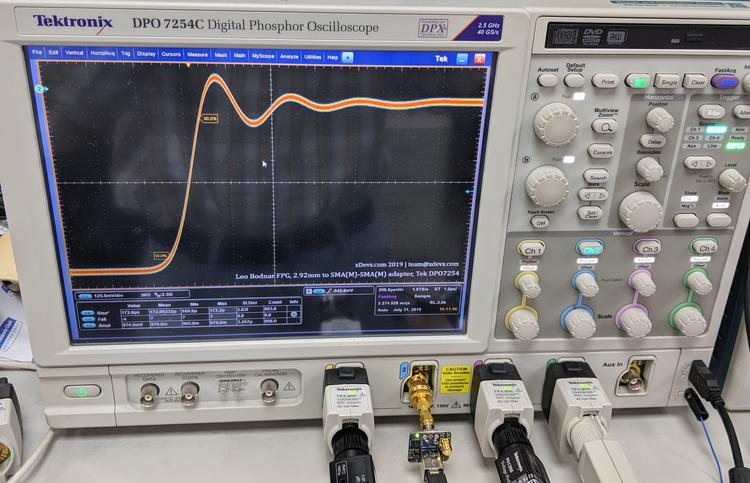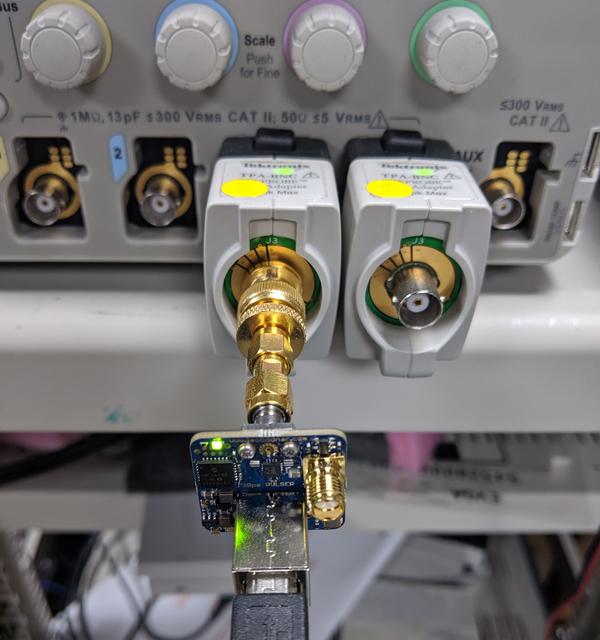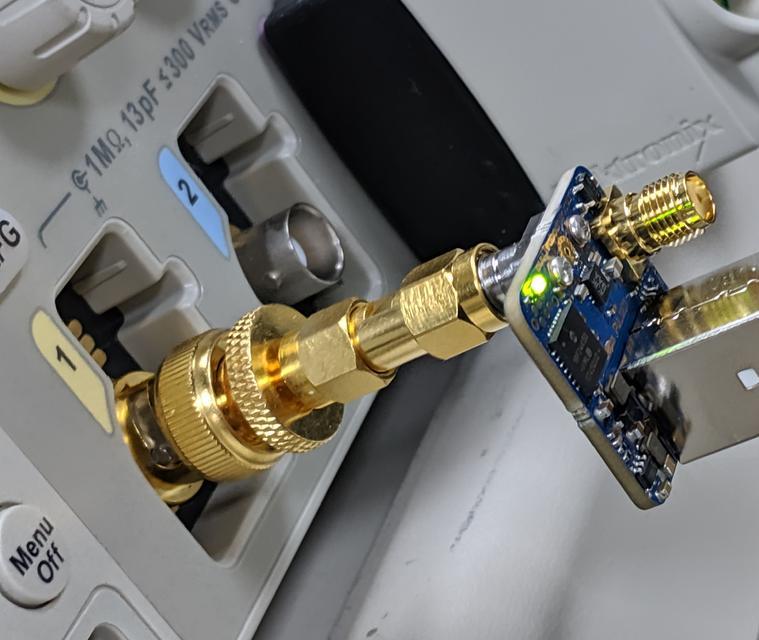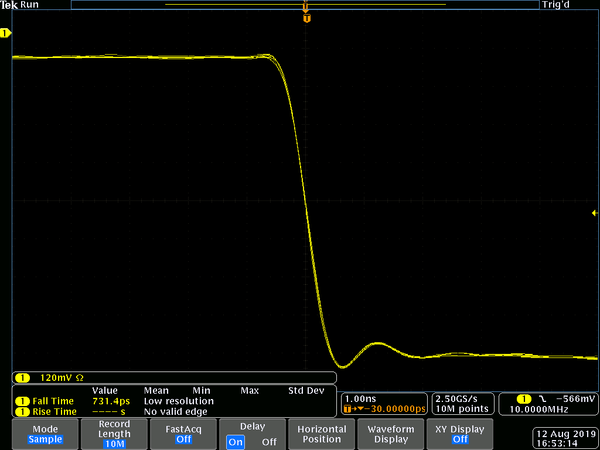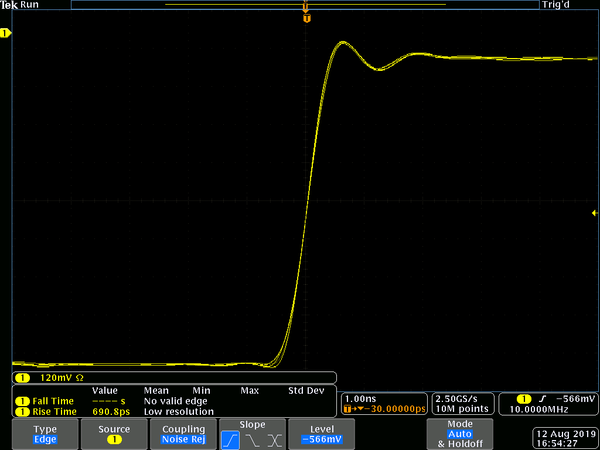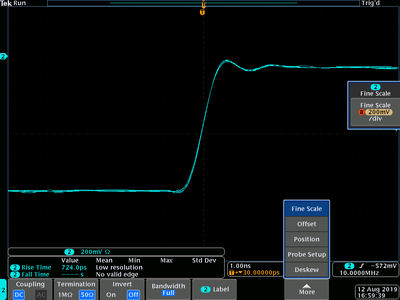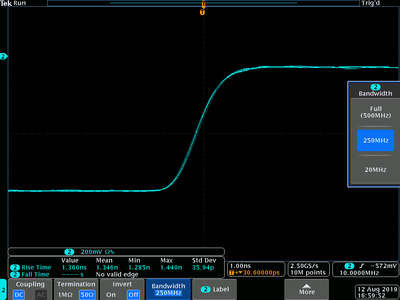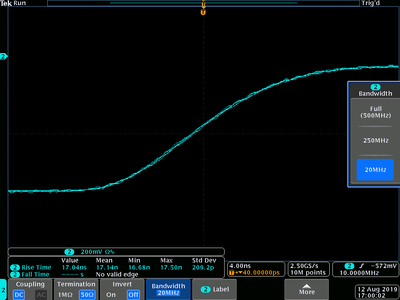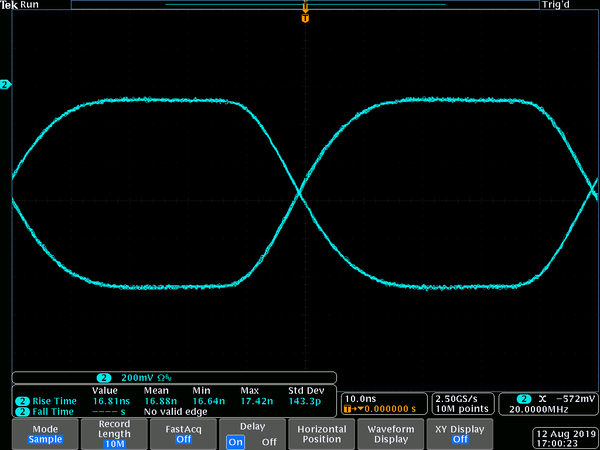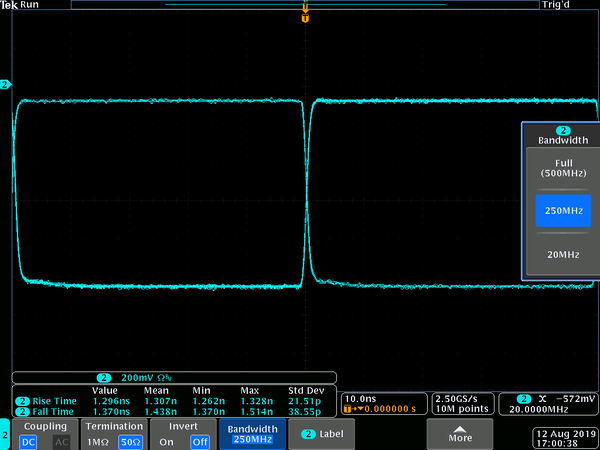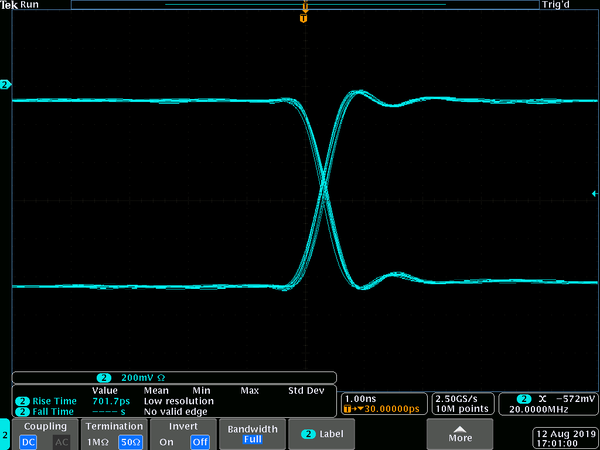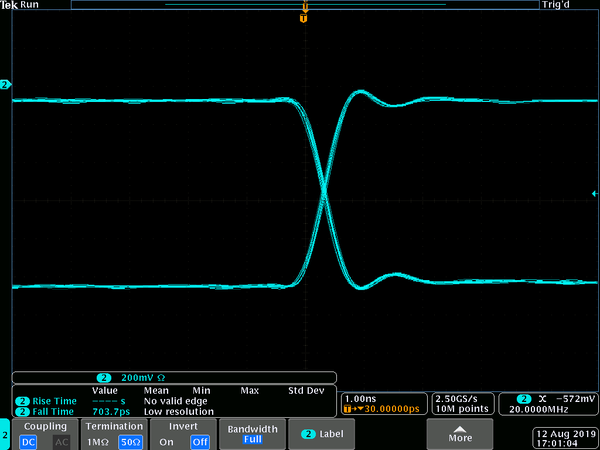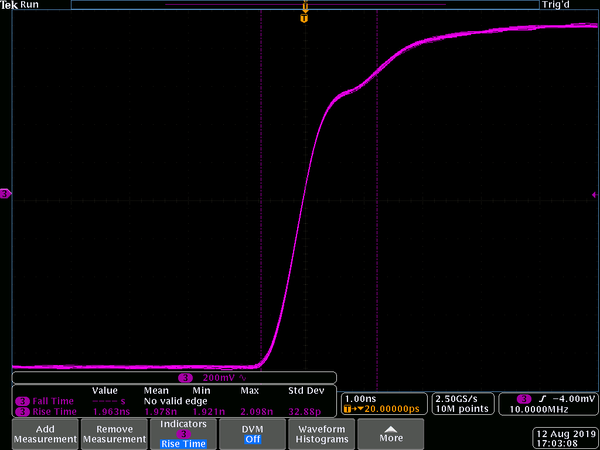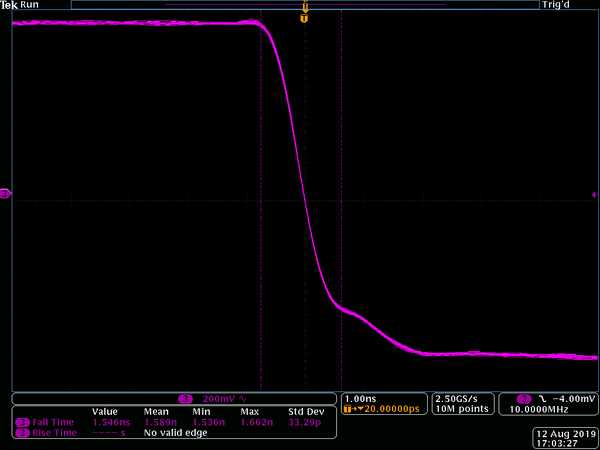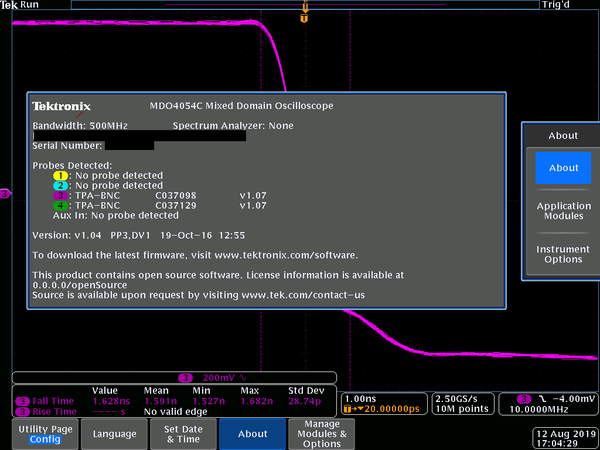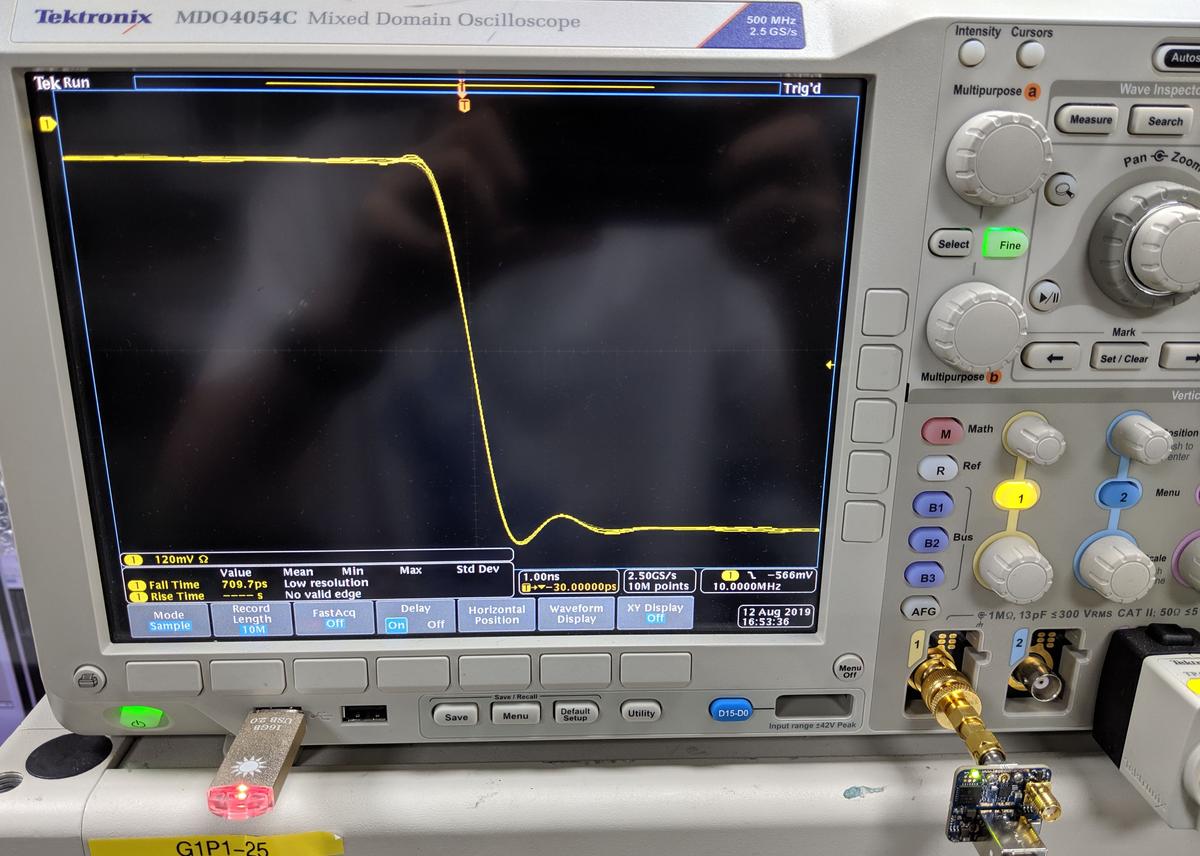Intro
We have got fast pulser for use in high-bandwidth signal path experiments. There are multiple versions of it available, depends on type of the output connector provided. Hardware is nearly identical, and output options are BNC, SMA female and 2.92mm (Type K) female connector. We got fastest 30ps and most expensive 2.92mm version suitable for testing high-end oscilloscopes, signal analyzers and TDR setups.
It came with low-cost Amphenol RF SMA-SMA 132168 adapter, however it would be good idea to avoid using it with more fragile expensive 2.92mm connector.
Correct male-male adapter would be something like Amphenol SV Microwave SF1593-6000 rated for DC-40GHz bandwidth. This adapter alone is almost $70 USD, ten times more than 132168 one . High-speed RF stuff is never cheap because very tight mechanical tolerance requirements.
Features from the product page are:
- 2.92mm RF microwave connector
- 10 MHz 2.5ppm output with 50% duty ratio
- Rise time and fall time of 30ps or better (our sample has 27.7 ps Trise and 29.4 ps Tfall)
- Output signal amplitude 50mVpp to 1.2Vpp (set via USB.) DC coupled, negative going.
- Trigger output with 1.5Vpp amplitude into 50 Ω load. AC coupled.
- USB powered – requires 200mA at +5 VDC. Can be used with USB charger or powerbank
- Each device is individually tested for rise/fall times using CSA803 with fast head.
Pulser calibration report, rise and fall time, 29 April 2019
Fast pulse output of the slower BNC version is AC coupled, however SMA and 2.92mm versions are DC coupled. Keep that in mind when ordering.
This pulse generator have edges good enough to test up rise/fall time of to ~12.5 GHz bandwidth analyzers/scopes.
2.92mm is mechanically compatible with SMA, but it’s not recommended combination. Mechanical tolerances of expensive 2.92mm connector are much tighter, and SMA cable/connector can easily ruin fragile surfaces and contacts, even with making just a single connection. Also 2.92mm RF connectors are designed with air dielectric. Meaning center signal pin is suspended with perforated beads, so connection is even more delicate.
Test results
Tektronix DSA71604C serial signal analyzer
This oscilloscope is targeted for signal analysis and SI/RF applications, providing four 50Ω channels with 16 GHz of the analog bandwidth. Sampling rate of this scope is 100 GS/s for single channel mode, with memory depth up to 250M. Typical rise time of the scope is 24.5 ps (10-90%) with jitter noise floor 0.27 ps.
Results with cheap Amphenol RF 132168 adapter SMA-SMA
To get a base line with simple adapter, rise and fall waveforms on one of the channels were captured.
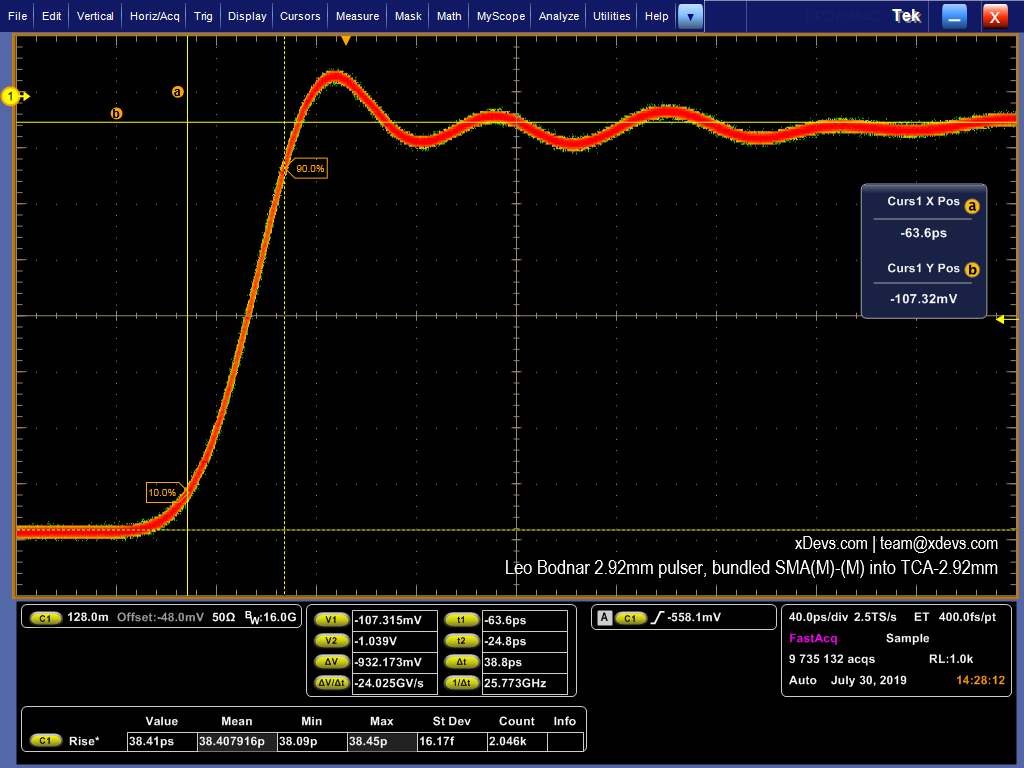
Rise time measured 38.41 ps mean, as expected from the system like this. Scope was running at the maximum sampling speed on 40 ps/division scale.
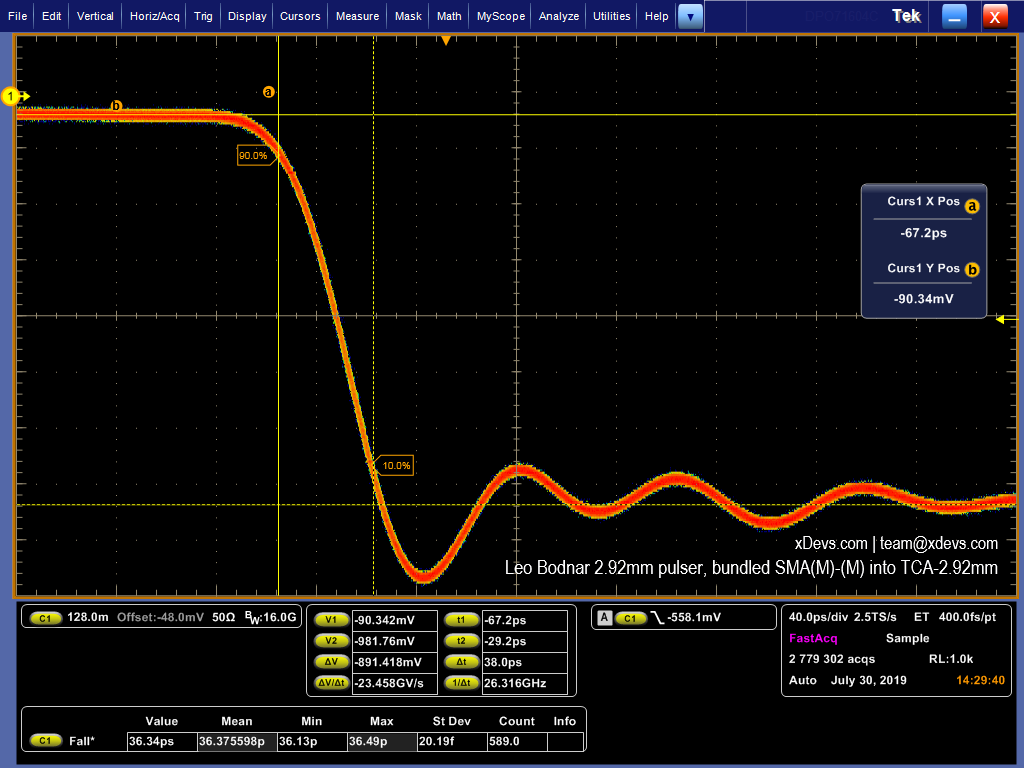
Fall time is slightly faster, with mean value 36.37 ps. There is quite a bit of overshoot/undershoot depends on the edge direction, often around 15%.
Results with Amphenol SV Microwave SF1593-6000 adapter 2.92mm(M)-2.92mm(M)
Pulser connected to scope via native Tektronix TCA-2.92mm port dongle and K-K type adapter. Power is provided by scope’s USB port.
With expensive 2.92mm adapter rise time improved and measured 34.15 ps mean and fall time even less 31.45 ps. Scope was running at the maximum 100 GSps interpolated sampling speed on 40 ps/division scale.
DSA70kC series scope have programmable bandwidth from full hardware capability to slow 500MHz limit. Animated GIF shows effect at each setting. Beware different time per division scale on slower bandwidth limits.
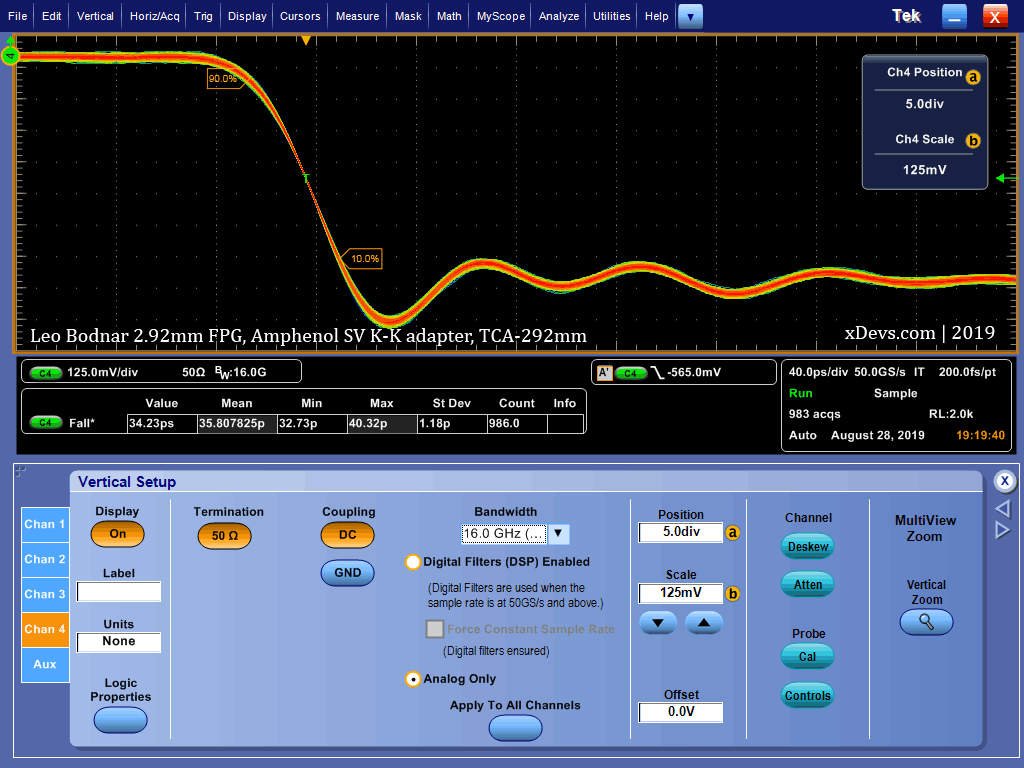
Tektronix TDS7704B digital oscilloscope
This oscilloscope is targeted for signal analysis and SI/RF applications, providing four 50Ω channels with 7 GHz of the analog bandwidth. Sampling rate of this scope is 20 GS/s for single channel mode, with memory depth up to 64M. Typical rise time of this scope is 62 ps (10-90%) with jitter noise floor 1.2 ps.
Connections are done identical to DSA71604C test and with very same adapter. Only Amphenol SV Microwave SF1593-6000 adapter was used in test here.
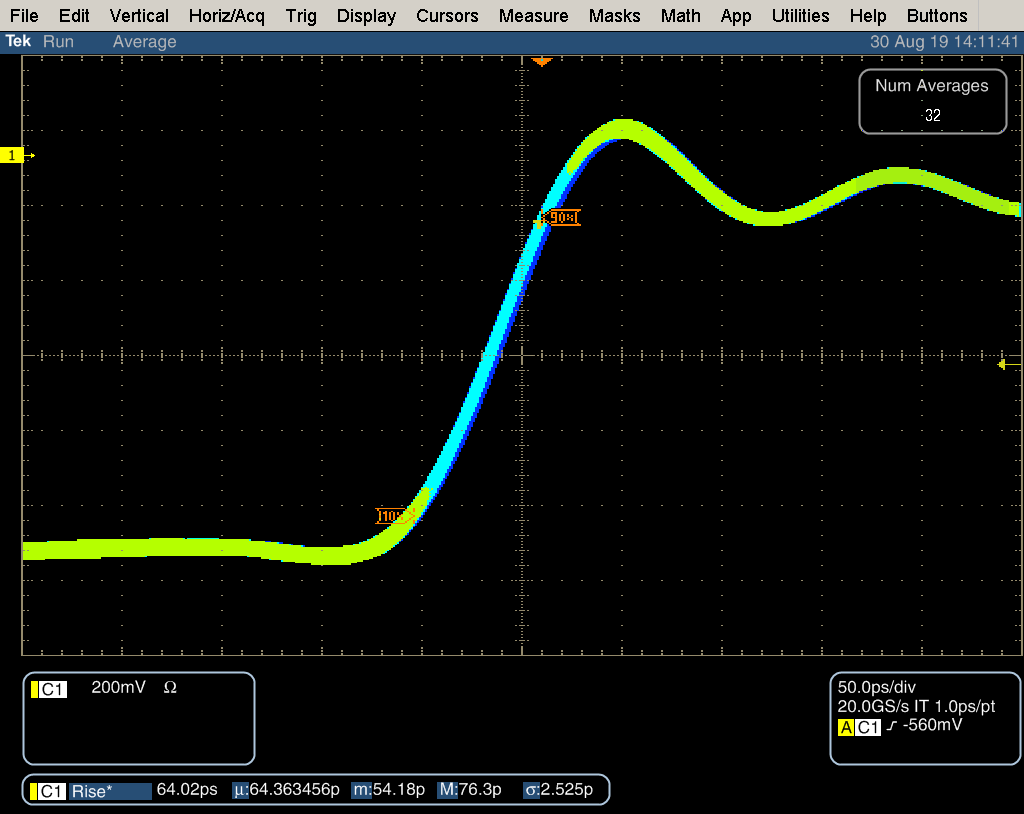
This scope demonstrated pulse rise time 64.4 ps, which is expected for such scope bandwidth.
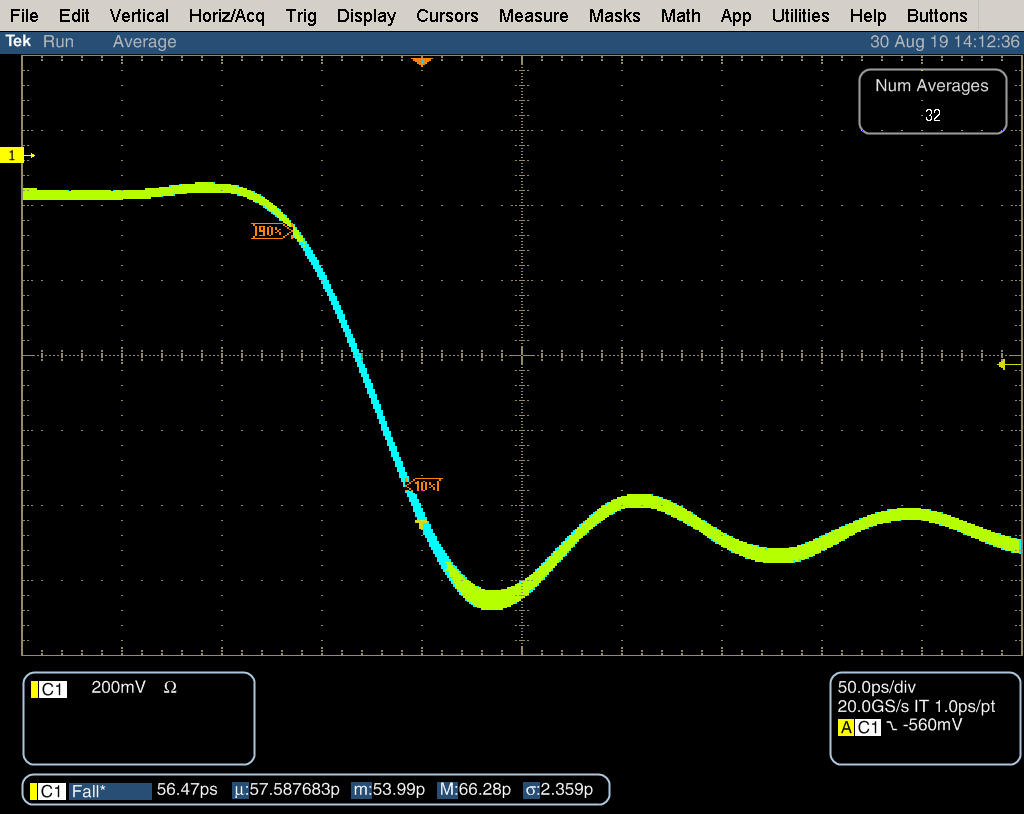
Fall time is also little faster, measured 57.6 ps on averange.
Results are also similar in FastACQ mode in eye dual-edge triggering.
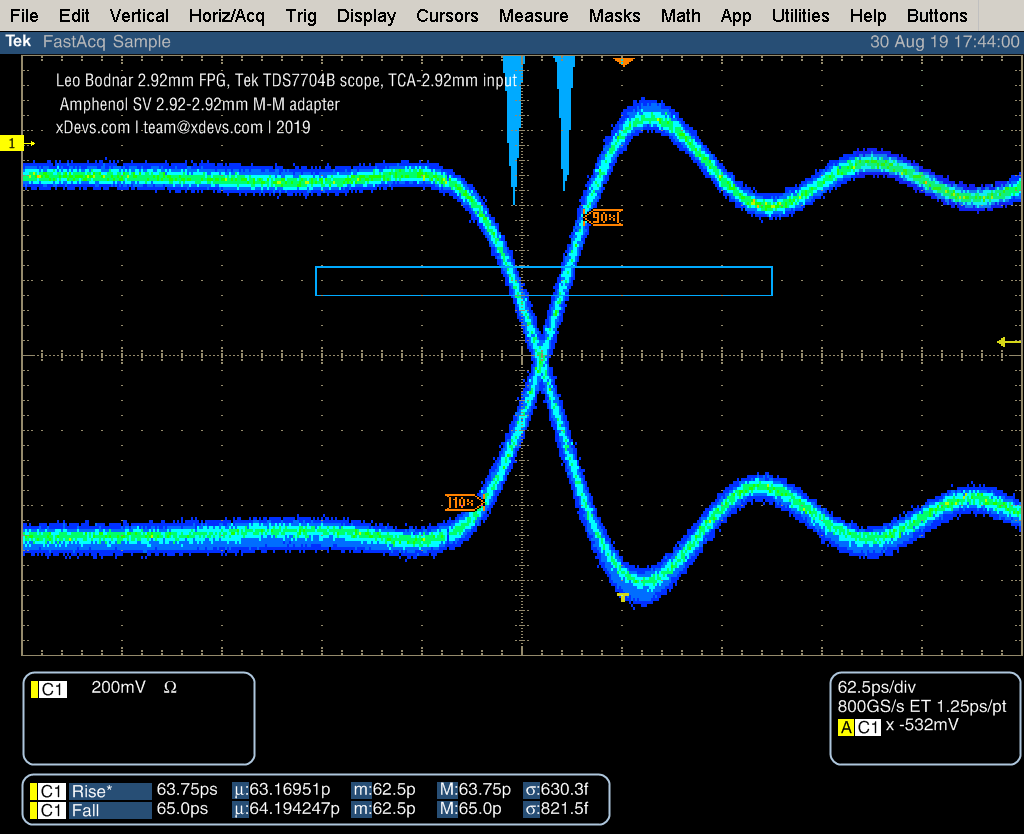
Tektronix TDS7404 signal analyzer
This oscilloscope is targeted for signal analysis and SI/RF applications, providing four 50Ω channels with 4 GHz of the analog bandwidth. Sampling rate of this scope is 20 GS/s for single channel mode, with memory depth up to 64M. Typical rise time of this scope is 100 ps (10-90%) with jitter noise floor 1.5 ps.
Tektronix DPO7254C oscilloscope
This oscilloscope is targeted for demanding R&D applications, providing four 1 MΩ/50Ω channels with 2.5 GHz of the analog bandwidth. Sampling rate of this scope is 40 GS/s for single channel mode, with memory depth up to 400M. Typical rise time of this scope is 160 ps (10-90%) with jitter noise floor ~1 ps.
Tektronix DPO7104 oscilloscope
This oscilloscope is targeted for demanding R&D applications, providing four 1 MΩ/50Ω channels with 1 GHz of the analog bandwidth. Sampling rate of this scope is 20 GS/s for single channel mode, with memory depth up to 200M. Typical rise time of this scope is 300 ps (10-90%) with jitter noise floor ~1 ps.
Tektronix MDO4054C oscilloscope
This oscilloscope is targeted for general purpose use applications, providing four 1 MΩ/50Ω channels with 500 MHz of the analog bandwidth. Sampling rate of this scope is 2.5 GS/s for single channel mode, with memory depth up to 20M. Typical rise time of this scope is 700 ps (10-90%).
MDO4054C response with FPG connected thru Tektronix TPA-BNC adapter.
Scope information:
Projects like this are born from passion and a desire to share how things work. Education is the foundation of a healthy society - especially important in today's volatile world. xDevs began as a personal project notepad in Kherson, Ukraine back in 2008 and has grown with support of passionate readers just like you. There are no (and never will be) any ads, sponsors or shareholders behind xDevs.com, just a commitment to inspire and help learning. If you are in a position to help others like us, please consider supporting xDevs.com’s home-country Ukraine in its defense of freedom to speak, freedom to live in peace and freedom to choose their way. You can use official site to support Ukraine – United24 or Help99. Every cent counts.
Modified: Sept. 23, 2019, 7:04 p.m.

